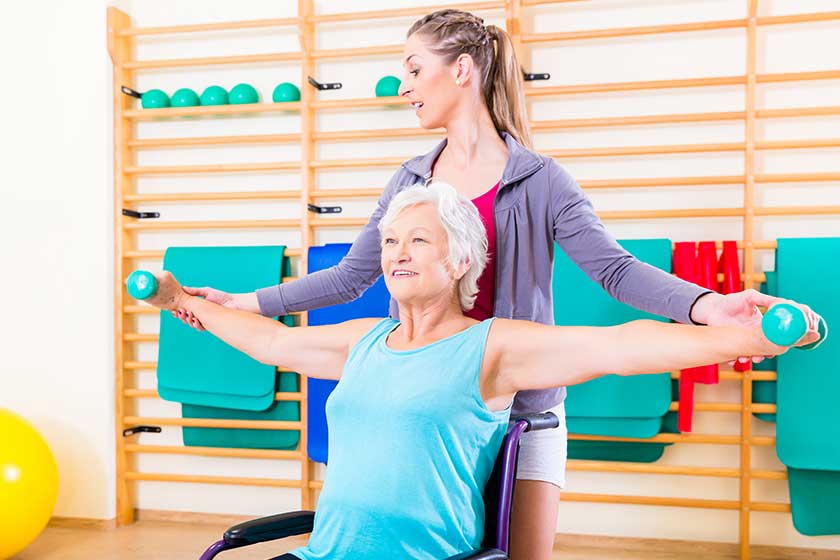Regular physical activity is essential for everyone, including older adults who use a wheelchair. Exercise can help improve strength, flexibility, cardiovascular health, and mental well-being. However, some exercises may be difficult or even impossible for people who use wheelchairs. Fortunately, there are many exercises that can be done in a seated position that are safe and effective. In this post, we will explore some simple exercises that your loved one can do in a wheelchair.
Seated Marching
Seated marching is a great way to get the heart rate up and increase blood flow to the lower extremities. To do this exercise, have your loved one sit up straight and lift one knee up towards the chest, then lower it back down. Repeat with the other leg. Do 10 to 15 repetitions on each side.
Arm Circles
Arm circles are a simple exercise that can help improve range of motion and strengthen the arms and shoulders. To do this exercise, have your loved one sit up straight and raise both arms straight out to the sides. Slowly make small circles with the arms, going forward for 10 to 15 repetitions and then backward for 10 to 15 repetitions.
Shoulder Rolls
Shoulder rolls are an easy exercise that can help improve posture and reduce stiffness in the shoulders. To do this exercise, have your loved one sit up straight and roll the shoulders forward in a circular motion. Repeat for 10 to 15 repetitions and then switch to rolling the shoulders backward for another 10 to 15 repetitions.
Seated Leg Raises
Seated leg raises are an excellent exercise for strengthening the legs and improving flexibility. To do this exercise, have your loved one sit up straight and extend one leg out in front of them. Hold for a few seconds and then lower the leg back down. Repeat with the other leg. Do 10 to 15 repetitions on each side.
Seated Twist
Seated twists are a simple exercise that can help improve flexibility in the spine and core strength. To do this exercise, have your loved one sit up straight and cross their arms over their chest. Twist the torso to the right, hold for a few seconds, and then twist to the left. Repeat for 10 to 15 repetitions on each side.
Seated Row
The seated row is an exercise that targets the back and can help improve posture. To do this exercise, have your loved one sit up straight and place their hands on the armrests of the wheelchair. Pull the shoulder blades back, squeeze them together, and hold for a few seconds. Release and repeat for 10 to 15 repetitions.
Hand Grips
Hand grips are a simple exercise that can help improve grip strength. To do this exercise, have your loved one hold a softball or a hand grip tool in one hand and squeeze it as hard as possible for a few seconds, then release it. Repeat with the other hand. Do 10 to 15 repetitions on each hand.
Neck Stretch
Neck stretches are an easy exercise that can help improve flexibility and reduce stiffness in the neck. To do this exercise, have your loved one sit up straight and tilt their head to the right, trying to touch their ear to their shoulder. Hold for a few seconds and then tilt the head to the left. Repeat for 10 to 15 repetitions on each side.
Seated Bicycle
The seated bicycle is an exercise that can help improve leg strength and cardiovascular health. To do this exercise, have your loved one sit up straight and place their hands on the armrests of the wheelchair. Begin pedaling their legs in a cycling motion, as if riding a bicycle. Do this for 30 to 60 seconds.
Regular exercise is important for older adults who use wheelchairs. These simple exercises, including seated marching, arm circles, shoulder rolls, seated leg raises, seated twists, seated rows, hand grips, neck stretches, and seated bicycles, can help improve strength, flexibility, cardiovascular health, and mental well-being.
Encourage your loved one to stay active and perform these exercises regularly, and always consult with a healthcare professional at Morada Cedar Hill before starting any new exercise program. With a little bit of effort, your loved one can enjoy the many benefits of physical activity, regardless of their mobility limitations.






